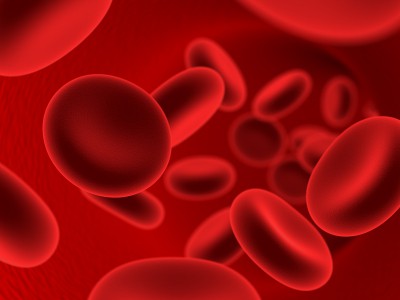On October 9, 2014, the Centre for the Commercialization of Regenerative Medicine (CCRM) held a Café Scientifique called Bigger, Better, Faster, Stronger — Are Stem Cells the Answer? at the Hard Rock Café in Toronto, sponsored by the Canadian Institutes of Health Research. Three experts discussed the ethics and likelihood of using stem cells to enhance human performance.
Stem cell therapies are an exciting reality, helping many people recover from life-threatening diseases and debilitating chronic conditions. Worldwide, more than 350,000 patients have been treated with living cell products. Currently, scientists are looking for ways to use stem cells to treat a wide range of disease conditions, such as Parkinson’s disease, multiple sclerosis, rheumatoid arthritis, heart disease, liver disease and diabetes.
While the venue was perhaps an odd setting for a discussion about stem cell applications, moderator Dr. Peter Zandstra noted that it was fitting to be meeting less than a kilometre away from where two Canadians, Dr. James Till and Dr. Ernest McCulloch first discovered transplantable stem cells. Dr. Zandstra is Chief Scientific Officer for CCRM, Professor at the University of Toronto’s Institute of Biomaterials and Biomedical Engineering and Canada Research Chair in Stem Cell Bioengineering.
The first speaker was Dr. Paul Zehr, a neuroscientist, professor and director of the biomedical research centre at the University of Victoria, and author of the book Becoming Batman: The Possibility of a Superhero. He discussed the concept of a continuum, how at one end of the scale we have stem cell treatments that can cure disease and help restore performance to ‘normal,’ and at the other end of the spectrum in the future, we could potentially use stem cell treatments to boost performance from normal to extremely high levels seen in Olympic athletes and sports heroes. He highlighted the key questions we should be asking as science moves along this continuum:
- Which situations should qualify for biomedical enhancements?
- Who decides the rules?
- What is the ‘acceptable’ range of human performance?
- Who gets access?
- Should we allow biomedical shortcuts or continue to require athletes to train for many years to reach their optimal potential?
Richard Pound, one of Canada’s most recognized figures in international sport, founding president of the World Anti-Doping Agency and former Secretary and President of the International Olympic Committee spoke next. He discussed how organized sport is a form of social conduct governed by rules agreed to by participants and how sport is intended to be humanistic, where the outcome is determined on skill attained through practice and training. Those who do not agree with the rules are not obligated to participate in sports. One of the key rules is to not use banned substances and methods codified in the World Anti-Doping Code. Adherence to the Code prevents unfair advantage in competition and safeguards athletes from health risks.
For example, take erythropoietin, or EPO as it’s commonly known. Originally developed as a therapeutic treatment to stimulate red blood cell production in patients with chronic kidney disease or undergoing cancer treatments, elite athletes have used it as a way to increase red blood cell counts above average, to boost performance by increasing the amount of oxygen reaching muscle tissue. EPO carries significant health risks because it thickens the blood, and its use has led to some deaths by cardiac arrest.
Pound said that the WADA has been aware of gene therapy and genetic manipulation since shortly after the organization was formed in 1999 and that there is already a rule in place about genetic manipulation. He says that so far though, emerging science in stem cell technology is not currently a major concern in sports. Evidence to date shows that stem cell treatments may assist in recovery from injury, but not always full recovery. Pound said that the hype is outpacing the action, so there is no need yet to amend the list of banned substances and methods to prohibit medical applications of stem cells.
If stem cell treatments do become a method for gaining unfair advantage in organized sport in the future, one the key issues will be finding a reliable screening test. Athletes cannot be disqualified on suspicion, but how will it be possible to target the exact tissue to find out if a stem cell therapy was used? WADA’s Gene Doping Panel will continue to tap into the literature and follow the buzz to see if a reliable test for gene doping can be found.
The third speaker, Dr. Bartha Knoppers, discussed the human right to attain the highest state of health, the ethical questions raised by the context of “attain” and that we must take into account the importance of the United Nations Convention on the Rights of the Child. She is a lawyer, ethics expert and professor at McGill University, holds the Canada Research Chair in Law and Medicine, and has also served on WADA’s International Ethics Committee.
She cautioned that the danger of well-intended abuse could arise if parental manipulation takes on a whole new meaning and stem cell treatments are used for performance enhancement in sports. She advocated that we will need an oversight framework to safeguard children as the science of stem cells progresses and interest in performance enhancement applications grows. The key questions we need to answer are: Are the interventions in the best interests of the children? Are the interventions medically required or for performance enhancement? Who decides what the best interests of children should be?
While this Café Scientifique did not provide answers, it was an interesting discussion of the important ethical considerations for the future applications of stem cells. In the concluding Q&A session, a bright woman asked,”Who gets access to these enhancements in a society that’s becoming increasingly stratified?” As Dr. Alfred Lanning says to Will Smith’s Detective Spooner character in the fictional movie, I Robot, “That, Detective, is the right question.”



